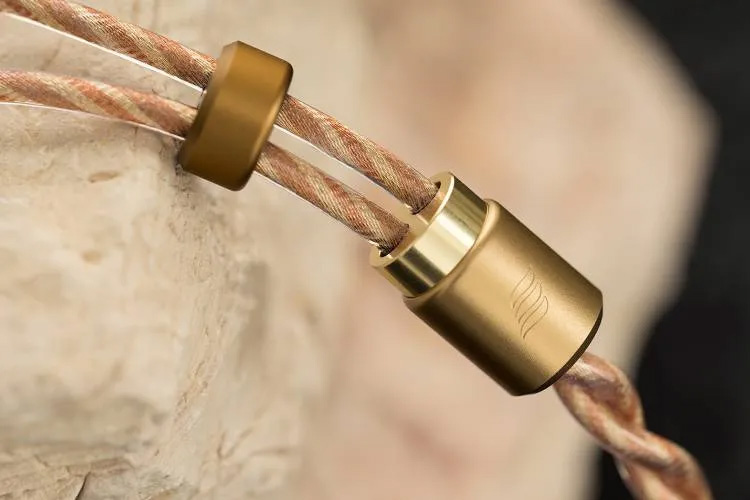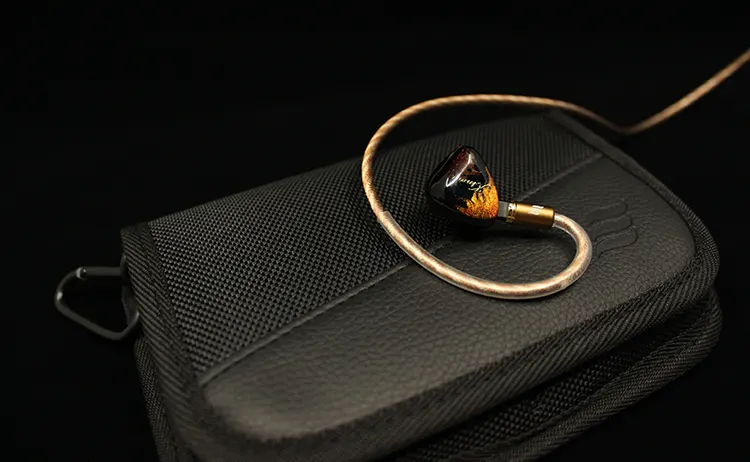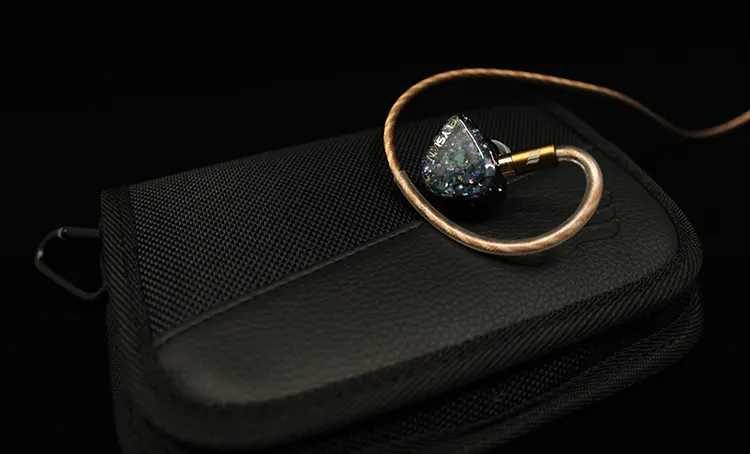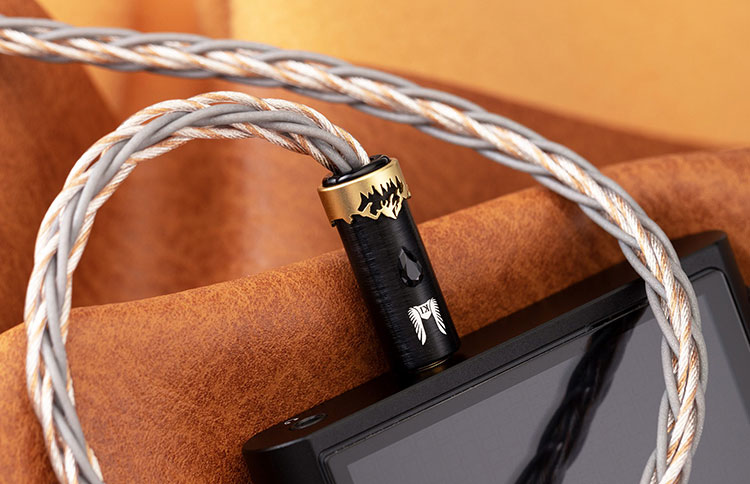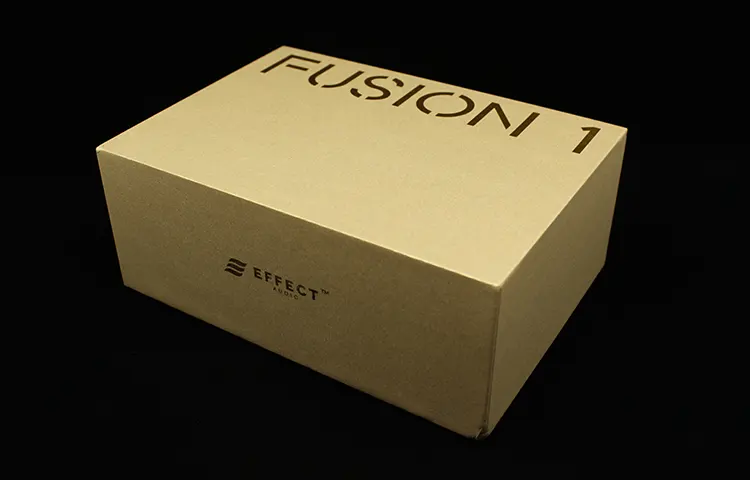Synergy
Generally, the Fusion 1 has a decent level of synergy and pairing with the IEMs. However, there can be subtle sonic differences depending on the type of IEM the Fusion 1 is connected to. As such, pairing types become an important factor that may produce varying results.
With this in mind, let’s take a closer look at some pairings of the Fusion 1 and selected IEMs. The following analysis was made with the paired IEM’s stock ear tips and Cayin N8ii as the source. The IEM stock cable was used as a comparison.
Kinera Nanna 2.1
The Kinera Nanna Z-Tune Edition 2.1 features a slightly elevated mid-bass, forward lower to upper midrange, and sparkly treble with excellent staging.
The main focus of the Kinera Nanna 2.1 is on midrange clarity and resolution where it excels at fleshing out the micro details from instruments and vocals. Timbre-wise, the Kinera Nanna 2.1 is slightly warm. The Kinera Nanna 2.1 comes with a silver-plated copper stock cable.
The Fusion 1 pairs well with the Kinera Nanna 2.1. The depth of the sub-bass remains unchanged however the mid-bass becomes punchier with faster decay. There is better bass texture and quality.
Leading into the lower to center midrange, this now sits further back compared to the default tuning. However, the center to upper midrange still remains the most forward frequency in the overall tuning.
The detail and clarity of the midrange as a whole improve where there is now an extra layer of detail from instrumentals and vocals being presented.
The timbre of the Fusion 1 leans more towards the neutral side and therefore this reduces the default warmth timbre on the Kinera 2.1. Overall treble remains sparkly however there is now improved detail and extension. High hats and cymbals come off with better detail and quality.
Soundstage width feels wider whereas depth and height are slightly deeper. In regard to imaging and layering, this has improved compared to the default setup. Instruments and vocals are now better placed across the stage.
Elysian Acoustic Labs DIVA 2023
The Elysian Acoustic Labs DIVA 2023 features 6 Balanced Armatures and is a pure BA IEM. The DIVA comes with a 3-way rotary bass switch allowing for on-the-go change to the sub and mid-bass levels.
With its standard bass switch setting, the DIVA focuses on delivering a super lush and highly resolving mid-range which is supported by a slightly elevated sub and mid-bass.
The treble comes off as neutral with excellent extension and quality with a slight warm timbre overall. The soundstage is very wide and tall. The DIVA comes with an Effect Audio Ares S as the stock cable.
The Fusion 1 pairs well with the DIVA. The coloration impact from the Fusion 1 is not as prevalent as its pairing with tri-brid IEMs such as the Kinera Nanna 2.1 however the notable impacts are apparent.
The sub-bass depth is reduced although it still extends well. The mid-bass becomes punchier, gains better definition and control, and is faster to decay. The bass texture overall is very good and slightly improves from the Ares S stock cable.
The timbre change is quite obvious where the DIVA sounds less warm and cooler with the Fusion 1. The lower to upper midrange changes slightly as the lower and center midrange pulls back however it remains as the most forward frequency in the DIVA’s overall tuning.
The detail and resolution of the midrange improve slightly where instruments and vocals sound smooth and lush. Treble extension and quality remain the same with no significant change.
The soundstage width feels a tad wider however depth remains similar to the Ares S stock cable setup. The same goes for imaging and layering as the DIVA’s capabilities here are untouched.
Select Comparisons
Kinera Orlog 8W
Technical
The Kinera Orlog is an Ultra-Pure OCC dual-material hybrid composition cable. The dual-material hybrid composition refers to the fact that there are two different materials used within the Orlog.
This means that 4 wires feature a gold-plated copper and silver-plated copper material whereas the other 4 wires comprises of pure copper and silver mix. The Orlog used for comparison is an 8-wire configuration with a 26 AWG gauge.
Design
The design of the Kinera Orlog is much more intricate and delicately finished compared to the Fusion 1 which has a much simpler finish. The design of the Orlog is centered around the splitter, cable plug, and connectors.
On the splitter, the barrel has a black aluminum composition and the bottom of the barrel itself features a gold circlet of mountains depicting the Scandinavian landscape.
To finish, the Kinera logo is printed in the middle of the barrel. The cable ring has the same golden circle of mountains with Kinera Imperial’s motto “Live only for Honor” engraved into it. The connectors and cable plug are made from the same black aluminum material as the splitter.
Performance
The Kinera Orlog and the Fusion 1 share similar traits with regard to sonic coloration as both cables look towards coloring the mid-bass and the mid-range.
The Fusion 1 allows the sub-bass to dig deeper with more reverb. Although the mid-bass has a very forward presentation, it comes off as punchier with faster decay on the Kinera Orlog compared to the Fusion 1. The Fusion 1’s coloration of the mid-bass has slightly more slam and slower decay.
The mid-range coloration from the Fusion 1 has a more forward lower to center mid-range compared to the Kinera Orlog which has a more linear presentation where the lower to upper midrange is more aligned with each other.
With this in mind, the midrange from the Fusion 1 sounds thicker with less warmth compared to the Kinera Orlog. Quality-wise within the mid-range, both cables exhibit a similar but very good level of detail retrieval where vocals and instrumentals sound lush and smooth.
The Fusion 1 does have the edge when it comes to vocal presentation as male and female vocals come off as more life-like and detailed.
Treble presentation is slightly brighter on the Kinera Orlog and both cables allow for good treble extension, detail, and clarity.
The soundstage on the Kinera Orlog comes off as wider with less depth compared to the Fusion 1. The Fusion 1’s soundstage focuses on soundstage depth and height and therefore has more space, layering, and better vertical positioning of instruments.
Effect Audio Code 23
Technical
The Effect Audio Code 23 is an Ultra-Pure OCC Copper Litz cable with a 16.5 AWG, 2-wire configuration.
Within each wire, there is a solid copper core which is surrounded by 12 multi-size Core Bundles. Each bundle uses Ultra-Pure OCC Copper Litz multi-size strands that come together to form one single wire.
The gauging of Code 23 is much thicker compared to the Fusion 1 which means that the Code 23 is stiffer, less flexible, and heavier. To finish, Code 23 is coated in Effect Audio’s UltraFlexi Insulation material, which is similar to that used on the Fusion 1.
Design
Code 23 comes in two colorways – Dystopian Black and Cyber Green. The cable under comparison is the Dystopian Black version. However, in reality, it has a lacquered, brown color with a “strand-like” texture to it.
The combination of the color and texture described above leaves you with a smooth, timber finish. Code 23’s Y splitter and plug come in a gun-metal finish and are very thick and heavy.
The Fusion 1 feels like an upgraded Code 23 when it comes to ergonomics. The Fusion 1 has a thinner gauging with more flexibility and suppleness.
Performance
Code23’s bass and mid-range coloration is similar to that of the Fusion 1 with the main differences related to the overall resolution of the mid-range and treble.
Both have deep sub-bass depth with a forward and wholesome mid-bass impact. The sub-bass digs just as deep however the mid-bass on the Fusion 1 is punchier with better bass texture and control.
The Fusion 1 brings the lower to upper mid-range a lot more forward compared to Code23. The Code23’s mid-range position is more neutral compared to the Fusion 1 with a much thicker weight within each note.
With that said, the Fusion 1 comes off with more energy and teases out more detail in the lower to upper mid-range. Vocals and instrumentals sound lusher, smoother, and with more definition.
The Code23 has a warmer timbre than the Fusion 1. Treble-wise, the Code23 and Fusion 1 have a similar presentation and come off as neutral. However, the Fusion 1 has more extension and resolution compared to the Code23. Cymbals and high hats sound crisper and more refined.
The soundstage on the Fusion 1 is wider but with less depth compared to the Code23 which is deeper. Interestingly, however, the Fusion 1 seems to have better layering, position, and imaging compared to the Code23. There is more room, freedom, and spacing between instruments and vocals from the Fusion 1.
Our Verdict
The Effect Audio Fusion 1 cable is a very good cable to start the journey into the new “Fusion” series lineup.
It provides additional clarity in the mid-range, mid-bass forwardness, and a wide soundstage whilst keeping the treble in check.
With its unique cable materials, however, synergy and pairing may give out different results however the overall impact on IEM coloration performance is there.
Effect Audio Fusion 1 Technical Specifications
- Selected Premium UP-OCC Material Gold Plated Silver Litz, Pure Silver Litz, and Pure Copper Litz Hybrid
- Proprietary Tri-Strata Layering Fusion Mix
- 40 Multi-sized Core Bundles with a new Solid Core Design
- Customized Multi-sized Strands Blend
- 21 AWG 2 Wires
- EA Ultra Flexi™ Insulation
- ConX® & TermX™ Basic Sets Interchangeable Co

